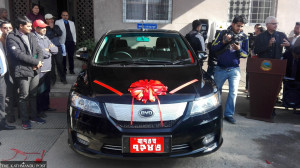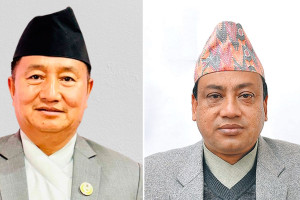Culture & Lifestyle
Say goodbye to scars and wrinkles with MNRF
Combining microneedling with radiofrequency energy, MNRF offers an effective solution for sagging skin and more.
Sanskriti Pokharel
Microneedling Radiofrequency (MNRF) is emerging as one of the most effective non-surgical treatments for comprehensive skin rejuvenation. MNRF targets many skin concerns, from wrinkles and sagging to scars and enlarged pores. With minimal downtime, long-lasting results, and proven safety even for darker skin tones, it quickly becomes a go-to solution for those seeking smoother, firmer, and more youthful-looking skin.
Dr Shreya Bastakoti is a consultant dermatologist and cosmetic surgeon. She is also co-founder and CEO of Lavana Skin and Hair Clinic, Kathmandu. She specialises in lasers, injectables, dermatosurgery, and hair restoration. Bastakoti explains how MNRF works and how aftercare is essential to ensure the best results.
What is MNRF treatment?
MNRF stands for Microneedling Radiofrequency, an advanced, minimally invasive skin rejuvenation technique that combines the mechanical action of microneedling with the thermal energy of radiofrequency (RF). This synergistic approach targets the epidermal and dermal layers of the skin to trigger collagen remodelling, elastin production, and skin tightening.
How is MNRF different from traditional microneedling or laser treatments?
Microneedling with Radiofrequency (MNRF) is a more advanced skincare treatment than traditional microneedling or many laser-based procedures. While traditional microneedling relies solely on creating micro-injuries in the skin to stimulate collagen production and natural healing, MNRF takes this a step further. It combines the benefits of microneedling with the delivery of controlled radiofrequency (RF) energy directly into the deeper layers of the skin. This dual-action approach triggers surface-level skin regeneration and promotes more intense collagen synthesis and deeper tissue remodelling. As a result, patients experience firmer, tighter, and more lifted skin compared to what traditional microneedling alone can offer.

Another key difference lies in how MNRF treats the skin surface. Unlike many ablative laser treatments, MNRF is non-ablative. This means it leaves the skin’s surface relatively untouched while working beneath to stimulate cellular repair and renewal.
Moreover, MNRF’s gentle nature makes it a low-downtime procedure. Most patients can return to regular activities quickly, with only mild redness or swelling that typically subsides within a day or two.
What kind of skin concerns can MNRF help with?
One of its most sought-after benefits is skin tightening. By stimulating deep collagen production, MNRF helps firm sagging skin, particularly around the jawline and cheeks, reducing the appearance of jowls and restoring a more youthful, lifted facial contour.
Another major advantage of MNRF is its effectiveness in reducing wrinkles and fine lines. Our skin naturally loses elasticity and collagen as we age, leading to visible signs of ageing.
For those with acne scars, MNRF offers a non-invasive solution targeting scar tissue below the surface. The combined effect of microneedling and radiofrequency energy helps break down old, damaged tissue while encouraging the growth of healthy new skin.
If enlarged pores are a concern, MNRF can help tighten the surrounding skin and reduce their appearance, giving the face a smoother and more refined look. Lastly, MNRF offers a subtle but noticeable lifting effect, making it a popular choice for those who want the benefits of a facelift without undergoing surgery.
Are there any aftercare instructions clients should follow?
After the procedure, it’s important to avoid direct sun exposure, excessive heat, and activities that cause heavy sweating like workouts or saunas for about 2 to 3 days, as your skin will be more sensitive during this time.
For the first 72 hours, steer clear of active skincare ingredients such as retinoids, alpha or beta hydroxy acids (AHAs/BHAs), and Vitamin C, as these can irritate the treated skin. It’s also recommended to avoid wearing makeup for at least 24 hours post-treatment to allow your skin to breathe and recover naturally.
You should also hold off on any other facial treatments or invasive skin procedures for at least two weeks to prevent overstimulation or irritation. During the recovery period, stick to a simple, gentle skincare routine.
Is MNRF safer than lasers for darker skin tones, considering pigmentation risks?
MNRF is particularly well-suited for pigmented skin types. Unlike traditional lasers, it does not ablate the skin surface, significantly reducing the risk of post-inflammatory hyperpigmentation, burns, or scarring.
What long-term skin changes have you observed in patients after regular MNRF sessions?
After undergoing a series of regular MNRF sessions, typically 3 to 4 treatments spaced about 4 to 6 weeks apart, patients often notice long-term improvements in their skin’s overall health and appearance. These include visibly younger-looking skin, reduced fine lines and wrinkles, improved firmness and elasticity, and a smoother texture with a more even tone. The appearance of acne scars, stretch marks, and enlarged pores also tends to diminish significantly over time.




 28.39°C Kathmandu
28.39°C Kathmandu

















